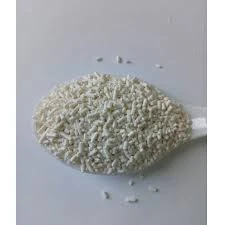
flavor enhancers list
Understanding Flavor Enhancers A Guide to Elevating Your Culinary Experience
Flavor enhancers play a pivotal role in the world of cooking and food processing, transforming ordinary dishes into extraordinary culinary delights. These substances amplify the taste of food, making them more appealing and satisfying to consumers. With an array of options available, it’s essential to understand what flavor enhancers are, how they work, and their impact on our overall food experience.
What Are Flavor Enhancers?
Flavor enhancers are additives that enhance the existing taste of food without imparting a distinctive flavor of their own. They work by stimulating our taste buds, sharpening flavors, and making dishes more palatable. The most well-known flavor enhancer is monosodium glutamate (MSG), but there are many others, including yeast extracts, hydrolyzed vegetable proteins, and natural flavor compounds.
The Science Behind Flavor Enhancement
The human palate is sophisticated and can detect five basic tastes sweet, sour, salty, bitter, and umami. Umami, often described as the savory taste, is primarily associated with glutamate, an amino acid found in many proteins. Flavor enhancers like MSG capitalize on this taste by boosting the umami profile of foods.
When seasoning dishes, cooks often rely on flavor enhancers to create a more complex and satisfying taste experience. For instance, adding a small amount of MSG can significantly elevate a broth or sauce, making it richer and more savory. Similarly, yeast extracts are commonly used in processed foods, enhancing flavor without contributing excessive sodium.
Types of Flavor Enhancers
flavor enhancers list

1. Monosodium Glutamate (MSG) Perhaps the most widely recognized flavor enhancer, MSG is commonly used in Asian cuisine and processed foods. It enhances umami flavors and can be particularly effective in soups, sauces, and snack foods.
2. Yeast Extracts These are derived from yeast and are rich in amino acids and vitamins. They provide a natural umami flavor and can enhance the overall taste balance in foods like soups, gravies, and spreads.
3. Hydrolyzed Vegetable Proteins These are proteins broken down into smaller peptides and amino acids. They are used in many processed foods to enhance flavor and provide a savory taste.
4. Natural Flavor Compounds Derived from spices, fruits, and vegetables, natural flavor compounds can be added to enhance the taste without artificial additives. These are increasingly popular among health-conscious consumers.
The Controversy Surrounding Flavor Enhancers
Despite their benefits, flavor enhancers, particularly MSG, have faced scrutiny. Some people report adverse reactions to MSG, leading to misconceptions about its safety. However, extensive research has shown that MSG is safe for the general population when consumed in normal amounts. The key is moderation, just like with any seasoning.
Conclusion
Flavor enhancers are essential tools in the culinary world, capable of transforming meals and enhancing our eating experience. While some individuals may prefer to avoid additives, understanding their role can help us appreciate how they contribute to flavor complexity. Whether you are a home cook looking to elevate your dishes or a food lover curious about what makes your favorite snacks so irresistible, flavor enhancers are worth exploring. The next time you savor a delicious meal, remember the unseen ingredients that help bring those flavors to life, enriching the culinary journey we all enjoy.
-
Mining Chemicals: Cyanide in Gold MiningNewsJun.04,2025
-
Culinary Versatility of Glacial Acetic Acid in PreservesNewsJun.04,2025
-
Common Food Additives in China Used in Bakery ProductsNewsJun.04,2025
-
Ammonium Nitrate Fertilizer in Modern AgricultureNewsJun.04,2025
-
Aluminum Hydroxide in Deodorants: Is It Safe?NewsJun.04,2025
-
1,2,3-Benzotriazole as a Rubber ProtectorNewsJun.04,2025
-
Why Glacial Acetic Acid Food Grade Is Essential in FlavorNewsMay.26,2025
Hebei Tenger Chemical Technology Co., Ltd. focuses on the chemical industry and is committed to the export service of chemical raw materials.
-

view more DiethanolisopropanolamineIn the ever-growing field of chemical solutions, diethanolisopropanolamine (DEIPA) stands out as a versatile and important compound. Due to its unique chemical structure and properties, DEIPA is of interest to various industries including construction, personal care, and agriculture. -

view more TriisopropanolamineTriisopropanolamine (TIPA) alkanol amine substance, is a kind of alcohol amine compound with amino and alcohol hydroxyl, and because of its molecules contains both amino and hydroxyl. -

view more Tetramethyl Thiuram DisulfideTetramethyl thiuram disulfide, also known as TMTD, is a white to light-yellow powder with a distinct sulfur-like odor. It is soluble in organic solvents such as benzene, acetone, and ethyl acetate, making it highly versatile for use in different formulations. TMTD is known for its excellent vulcanization acceleration properties, which makes it a key ingredient in the production of rubber products. Additionally, it acts as an effective fungicide and bactericide, making it valuable in agricultural applications. Its high purity and stability ensure consistent performance, making it a preferred choice for manufacturers across various industries.











